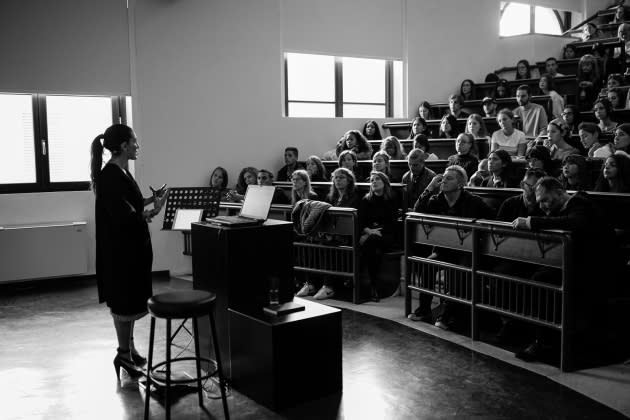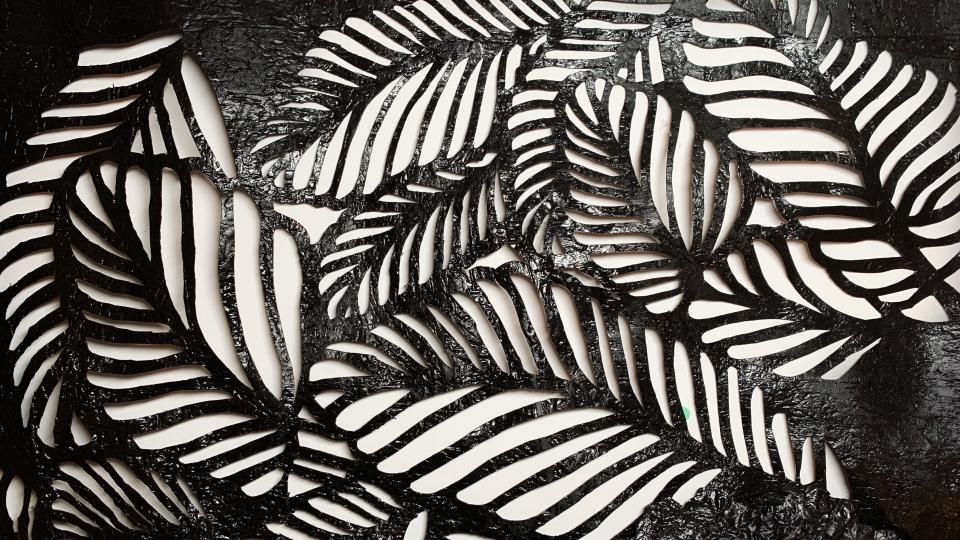Green People: Meet the Woman Behind CFDA’s Sustainability Plan

Today, brands live and die by their values, and smaller designers are seeking out guidance among the wave of greenwashing.
More resources exist within digital walls, and the Council of Fashion Designers of America is one landing point for sustainability resources. On the cusp of the CFDA’s 60th anniversary, WWD spoke with Sara Kozlowski, vice president of program strategies, education and sustainability initiatives at the CFDA, to unpack the broader sustainability vision of the organization, and what resources to expect next.
More from WWD
WWD: Why did you become involved with sustainability?
Sara Kozlowski: Prior to joining the CFDA staff in 2014, I spent a decade in the industry as a designer and, also, in fashion education roles for 12 years in Shanghai, San Francisco and New York. Experiencing 20 years of enormous waste and the negative impacts of materials and processes associated with the fashion system and design of traditional collections, I returned to school in 2008 for an MBA, which centered on sustainable strategies and the importance of considering impacts of both design and business choices at scale.
WWD: Where is sustainability on the priority list this year for the CFDA?
S.K.: Through the leadership of our chief executive officer, board and members, sustainability has been an integral pillar of CFDA initiatives for more than a decade; first anchored by the creation of the Eco-Challenge award in 2010. With the initial launch of the Sustainability Resource Hub in 2019, we’ve taken an open access, holistic, learning-centered approach, aiming to calibrate tools and resources and heighten environmental, social [and] economic dimensions of sustainability while encouraging sustainable business model innovation and brand ecosystems.
By providing tactical, sustainable strategies, learning resources and sharing time-relevant information from stakeholder experts, our mindset is to help contribute to individual expedition of often-complex choice-making and the unpacking of design and business decision-related trade-offs. We acknowledge that one size does not fit all — especially for small-scale brands.
WWD: What resources or collaborations are you excited to share more about?
S.K.: Sustainable strategies are increasingly integrated into all areas of programming, and across our organization including supply chain-led initiatives such as the Materials Hub. We are focused on helping to inform and guide individuals and brands about reducing environmental impact and the transition to a fully decarbonized sector by 2050. We’re committed to the principles of both the U.N. Global Compact and the U.N. Sustainable Development Goals. Earlier this year, our CEO [Steven Kolb] pledged our support of the guidelines of the U.N. Fashion Industry Charter for Climate Action.
We also strongly believe in investing in students who are designing the future and will be the pioneers of new frontiers through scholarships accompanied by mentorship, such as the Swarovski Foundation partnered Re: Generation Innovation Scholar Award. We entrust the next generation’s vision and potential to lead our industry, people and planet with creative ingenuity.
WWD: When it comes to circularity, what’s at the top of your bookshelf?
S.K.: We’re in the process of expanding the Resource Hub’s directories. Among the components will be a “Library + Lexicon” for browsing curated evergreen books, journals, reports, as well as video, film and other media. Constructing this directory, with entries spanning more than 30 years across multiple creative sectors, has brought the lineage of circularity and the history of design systems thinking top of mind. [William] McDonough’s “Cradle to Cradle: Remaking the Way We Make Things,” largely attributed to the genesis of circularity, is marking its 20th year since being published, and [this year] marks three decades since the release of the “Hannover Principles: Design for Sustainability,” which are just as inter-generationally relevant today as in 1992.
WWD: What gives you hope amid the ongoing news cycle?
S.K.: Students! As the architects of our future, today’s students are captaining change by using their creative voices to amplify and demand climate action and by designing with environmental and social responsibility first, while also embracing new technologies.
As the climate crisis accelerates and its effects have produced extreme weather, heat and drought, globally, our industry accounts for 6 to 8 percent of total greenhouse gas emissions and emits more than 1.2 billion tons of carbon dioxide annually. For many apparel brands, nearly two thirds of environmental impact can be traced to raw materials made with fossil fuel and plastic byproducts. Shifting to renewable energy and de-fossilizing supply chains are critical to decarbonization yet can often be challenging for independent designers to implement when access to pipeline innovations, or investment capital isn’t yet in reach due to scale.
The recent passing of the Inflation Reduction Act as well as this year’s advancements in fashion policy open the door to potentially lead to more access and affordability of innovation and to tangible change – especially in resourcing and financing the transition to renewable energy.
WWD: Where can we find you relaxing at the end of the day?
S.K.: At home, relearning how to grow basic vegetables and learning how to regenerate soil by planting nitrogen-producing ground cover to replace traditional grass (and save water).

Sign up for WWD's Newsletter. For the latest news, follow us on Twitter, Facebook, and Instagram.
RSVP for "A Matter of Style", a Fairchild Archive exhibition September 9-10 in New York City.


